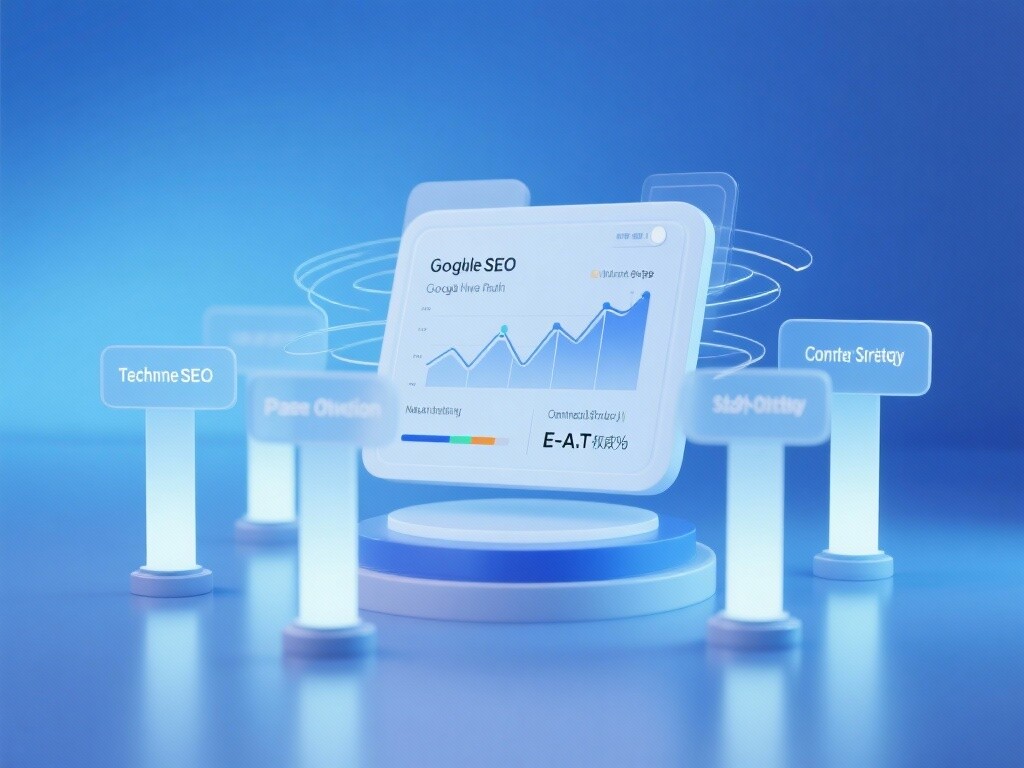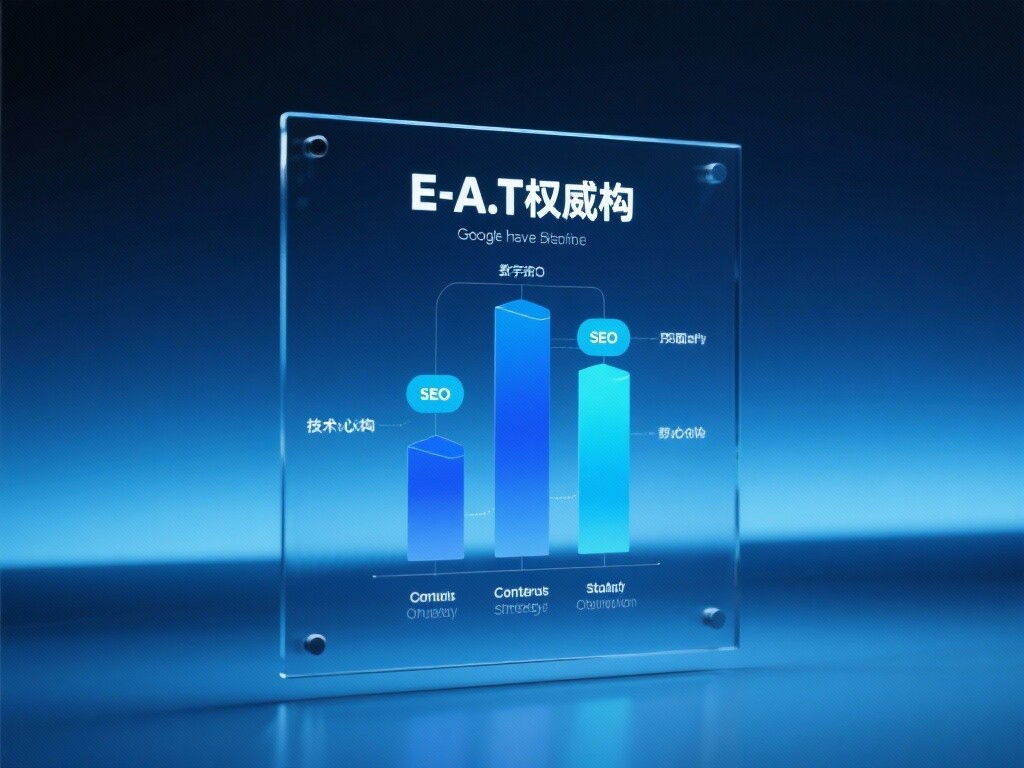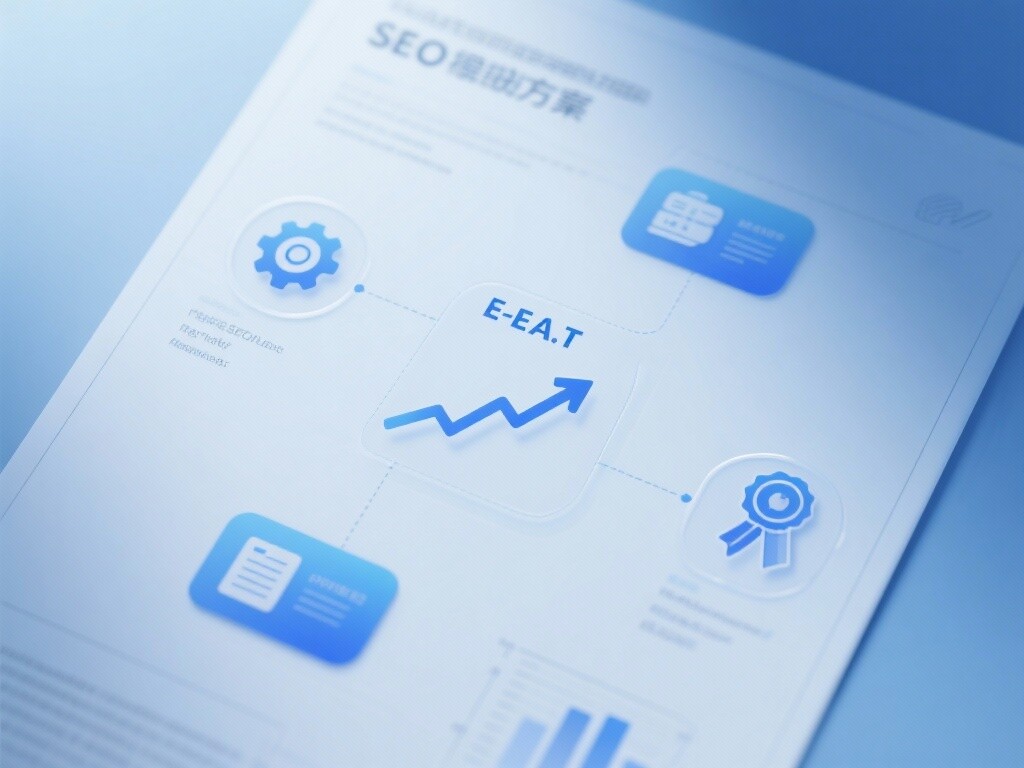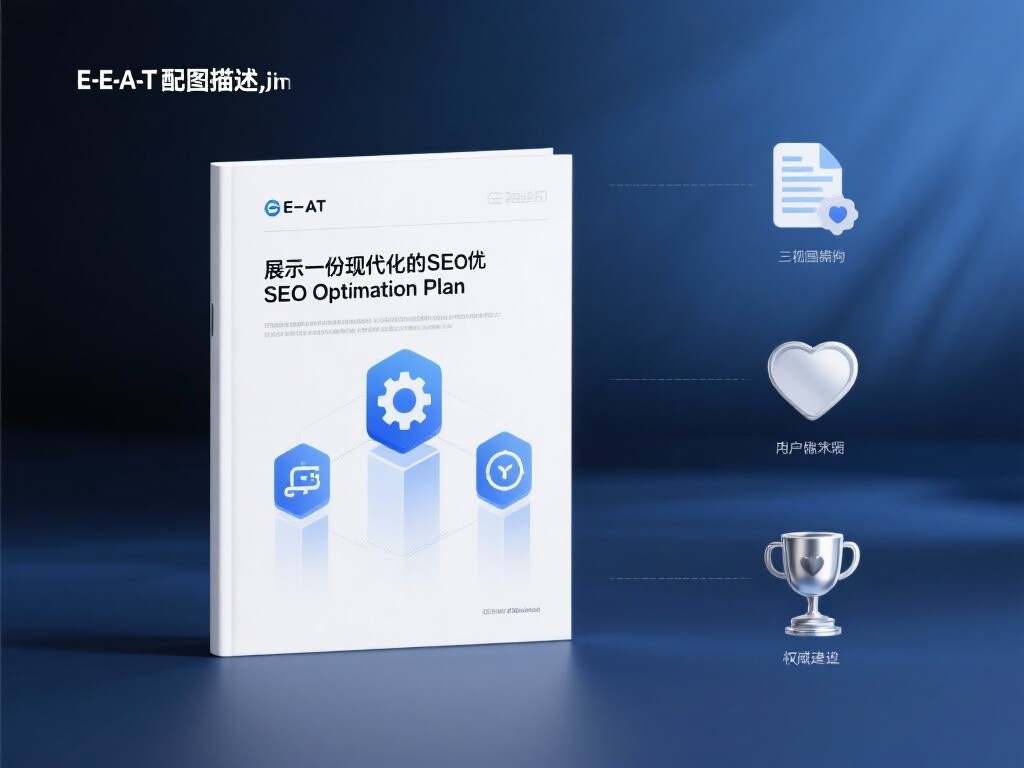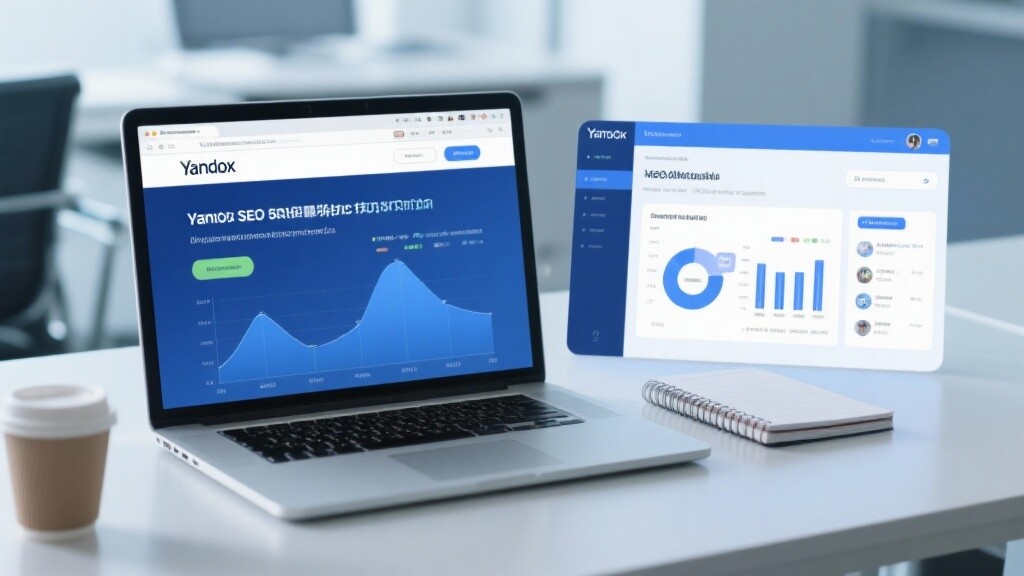Easy Camp Cloud Intelligent Website Construction and Marketing System Platform!
I. The Authoritative Definition and Core Value of SEO Optimization Solutions
1. The authoritative definition of an SEO optimization plan.
An SEO optimization plan is a detailed plan that outlines strategies for a specific timeframe (such as...). months or months) A structured document and execution roadmap for systematically implementing technical SEO, On-Page SEO, Off-Page SEO , and content marketing strategies to improve website ranking on search engine results pages (SERPs), increase organic traffic , and ultimately achieve business conversion goals.
2. The core strategic value of SEO optimization solutions
II. The Development History of SEO Optimization Solutions: From Techniques to Strategic Science
The development of SEO optimization strategies reflects the evolution of search engines from simple keyword matching to complex semantic understanding and user experience evaluation .
1. Early Stage: Keyword Stuffing and Link Farms (1990s-2003)
Technical characteristics: The search engine algorithm is simple, and black hat techniques such as keyword density, hidden text, and link farms are prevalent.
The core of the scheme: rapid cheating , winning through quantity rather than quality.
Limitations: Rankings are extremely unstable; once the algorithm is updated, the user is penalized and eliminated .
2. Content is King and Algorithm Iteration (2003-2015)
Milestone: Google releases core algorithm updates including **Panda (content quality) and Penguin (link quality)**.
Solution Transformation: Emphasizing high-quality, valuable content and building natural, authoritative backlinks . Optimization begins to focus on user intent .
3. The Era of Mobile-First, Technological SEO, and EAT (2015 to Present)
Core Focus: Mobile-First Indexing , Core Web Vitals (CWV) , and Brand Authority (EEAT) .
Technological advancements: SEO optimization solutions have become a comprehensive digital strategy encompassing technical architecture, semantic understanding, user experience, and brand reputation . AI is playing an increasingly important role in content generation and search.
Trend: Emphasis on continuous optimization of search intent matching , topical authority , and data-driven approaches .
III. The Technical Principles of SEO Optimization Solutions: Four Core Pillars
A scientific SEO optimization plan must cover the following four indispensable pillars, which together build the foundation of a website's ranking and authority.
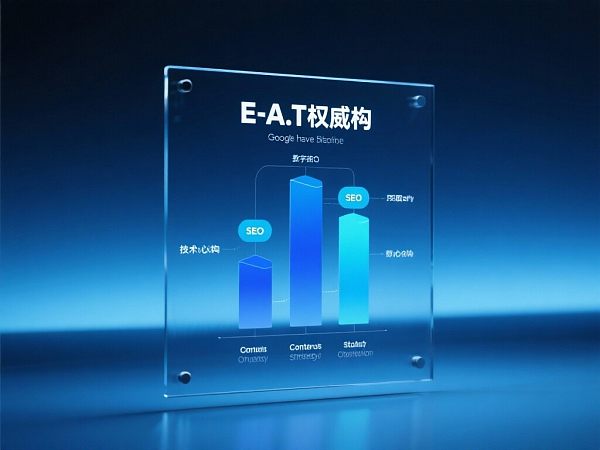
1. Technical SEO Architecture
Principle: To ensure that search engines can successfully crawl, interpret, and index your website content.
Core elements:
Website health (Crawlability & Indexability): Optimize Robots.txt , Sitemaps , and manage crawling budget .
Website Performance (CWV): Optimize **LCP (Maximum Content Rendering), FID/INP (Interactivity), and CLS (Layout Offset) ** to ensure a lightning-fast user experience.
Structured data (Schema Markup): Deploy structured data such as company information, products, reviews, and FAQs to help Google understand content entities and obtain rich media search results .
2. On-Page SEO
Principle: Ensure that each page accurately matches the user's search intent and clearly conveys the page's theme and value to the search engine.
Core elements:
Keyword intent matching: Determine whether the keyword intent is informational, navigational, or transactional , and provide the matching content type.
High-quality metadata: Optimize title tags and meta descriptions to attract users from the SERP to the website with a **high click-through rate (CTR)**.
Content hierarchy (H tags): Use H1-H6 tags to clearly organize content and demonstrate logic and structure .
3. Content Strategy
Principle: Continuously generate high-value, authoritative content that meets user needs to establish topical authority .
Core elements:
Topic Clusters: Centered around core keywords , a series of in-depth content on related topics are created, forming an internal linking network .
EEAT Signal: Ensures content is written and attributed to domain experts , showcasing professional certifications, experience, and reliable references .
4. Off-Page SEO and Authority Building
Principle: Prove the website's authority and popularity through external signals.
Core elements:
High-quality backlinks: Natural and relevant backlinks obtained from authoritative and high-authority websites in the industry .
Brand mentions and reputation management: Monitor brand mentions on platforms such as social media and news websites to ensure a positive brand image and reputation .
IV. Core Features and Strategic Advantages of SEO Optimization Solutions
1. Customization and Goal-Driven
Features: Professional SEO optimization solutions are not template-based , but tailored to a company's industry, competitive environment, existing website status, and business goals .
Advantages: Precisely locate the most valuable keywords, avoiding unnecessary optimization investment.
2. Continuity and Iteration
Characteristics: SEO is a long-term, continuous process . The plan needs to be reviewed, adjusted, and iterated quarterly or monthly to adapt to algorithm updates and competitive changes .
Advantages: Ensures stable and continuous growth in optimization results .
3. End-to-end SEO/CRO integration
Features: The solution focuses not only on traffic but also on conversion rate optimization (CRO) .
Advantages: Ensures that the high-quality traffic brought in can be converted into inquiries, orders or subscriptions , truly realizing business value .
4. Data transparency and quantifiability
Features: Every action and goal in the program is linked to quantifiable metrics (KPIs), such as ranking, organic traffic, CWV score, conversions, and target CPA .
Advantages: The results are immediately apparent , making it easy for companies to conduct input-output analysis .
V. In-depth application and practical scenarios of SEO optimization solutions
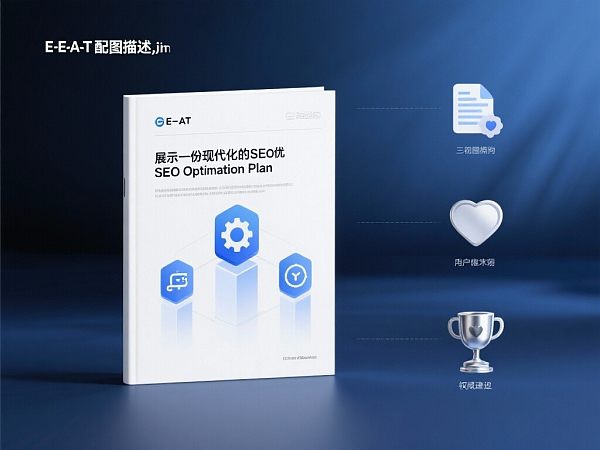
1. Website Audit and Technical Repair (Phase 1)
Application: To conduct a comprehensive check-up on existing websites and identify technical obstacles .
Practical application:
CWV Optimization: Image compression, CSS/JS optimization, and website speed boosted to **Within seconds**.
Dead links and Fix: Establish the correct redirect rules help reclaim lost link equity.
Mobile experience optimization: Ensure all pages work well on mobile devices. user-friendly and usable**.
2. Content Clustering and Intent Coverage (Phase Two)
Applications: Establish authority in the field and capture long-tail keyword traffic .
Practical application:
Create a Pillar Page: A deep and authoritative homepage for a broad core theme .
Creating Cluster Content: Around the pillar page, create... ~ blog posts that answer specific long-tail questions .
Internal link building: Ensure that all cluster content points to the core pillar page , thus concentrating topic weight.
3. EEAT signal enhancement (Phase 3)
Application: Enhance brand credibility in the YMYL (Your Money Your Life) sector (such as finance and healthcare) .
Practical application:
Transparent author information: The author's professional certificates and resume are clearly displayed on the content page.
The "About Us" page has been enhanced with detailed information about the company's history, honors, and team of experts .
Public relations link building: Strategically obtain citations from authoritative industry media, universities, and government websites .
4. Local SEO optimization
Application: Localized search for users in a service area, such as **"best [service] nearby"**.
Practical Application: Optimize your Google My Business (GMB) profile to ensure NAP (Name, Address, Phone) information is displayed across the entire network. consistent , and we have received high-quality reviews from local customers .
VI. YiYingBao: Your AI-Driven SEO Optimization Solution Expert
YiYingBao's SEO optimization solutions are a comprehensive growth blueprint based on state-of-the-art AI search algorithm understanding, full technical auditing, and data-driven strategies .
AI-driven intent analysis: Leveraging AI tools to deeply analyze search intent for target keywords , ensuring your content effectively targets search queries. match Google's number one ranking in terms of type and depth**.
Core Web Vitals Performance Guarantee: Our solution prioritizes **CWV optimization as a top priority for technical SEO**, ensuring website loading speeds are faster than [previous standard]. of the competitors.
EEAT Authority Building Roadmap: Providing customized off-site public relations and content author attribution strategies to systematically enhance your digital authority signal within the industry.
Quantifiable months/ -Month Implementation Plan: Provides clear Gantt charts and monthly KPI reports , giving you a clear overview of your inputs, progress, and expected returns .
FAQ
1. How long does it typically take to see results from a complete SEO optimization plan?
Answer: Usually required toIt takes months to see initial traffic and ranking growth, and... toIt takes months to reach a stable period of rapid growth.
months: mainly technical fixes, keyword research, and content architecture building (laying the foundation).
months: Rankings begin to climb , and traffic from long-tail keywords starts to appear.
months: Achieve ranking for core keywords , and traffic enters an exponential growth phase .
2. Where do the main costs of an SEO optimization plan lie?
Answer: The main costs are concentrated in "professional personnel" and "content production".
Professional staff: Costs for analysis, auditing, and planning by senior SEO strategists and technical engineers .
Content production: Fees for writing and designing high-quality, in-depth content that meets EEAT standards .
Technical tools: Cost of SEO auditing tools, keyword analysis tools , and content performance monitoring tools .
3. What is the difference between "black hat SEO" and "white hat SEO"? Why is it essential to choose white hat SEO?
Answer: White hat hoods are strategic assets, while black hat hoods are short-term gambles.
Black hat SEO: Using cheating techniques (such as keyword stuffing, paid links, and hidden text) to try to deceive search engines . It can be effective quickly, but once discovered, the website will suffer permanent penalties.
White Hat: Following search engine guidelines , you achieve rankings by improving user experience and providing high-quality content . The results are lasting and stable, making it the only way to build long-term digital assets.
4. What is the most easily overlooked yet crucial aspect of an SEO optimization strategy?
Answer: It's "internal linking strategy" and "EEAT signal".
Internal links: Optimizing website internal links can concentrate weight on core pages and help search engines understand the website's thematic structure , which is key to improving rankings at low cost.
EEAT: Google is increasingly emphasizing author authority and website trustworthiness . Submissions must include author attribution, proof of qualifications, and high-authority external references ; otherwise, even the best content will struggle to achieve high rankings.

Customer Reviews
Mr. Zhang, CEO of a B2B industrial software company
"Our search engine rankings have consistently been suppressed by our competitors. YiYingBao's SEO optimization solution provided us with a highly actionable, data-driven blueprint . They first resolved our website's **Core Web Vitals technical issues**, and then guided us in building a content cluster around our core product lines. In the [number] days of implementation..." months , we**Among the core keywords of them appeared on the first page of Google search results**, resulting in an increase in organic search queries. . Their solution not only brought in traffic, but also positioned our brand as an industry authority on knowledge .
Ms. Li, Marketing Director of a financial services startup
"As a company dealing with YMYL (financial) data, the authority of our website is paramount. EYYA's solution placed EEAT (Employment, Authorization, and Accreditation) building at its core. They helped us standardize the display of authors' professional qualifications, our media relations strategies , and deploy structured data . Through technical compliance and authority building, our overall website credibility score has significantly improved . Now, we've not only gained traffic, but our clients' conversion rates on our official website have also increased." " , because users trust us more."
 Complete Guide to Yandex SEO Optimization Techniques to Help You Quickly Dominate the Russian Market!This article provides a comprehensive analysis of the core techniques of Yandex SEO optimization, including keyword strategies, technical optimization, content marketing, and more. It leverages the functional advantages of EasyYBAI intelligent website building system to offer businesses a one-stop solution, helping them rapidly capture the Russian market.
Complete Guide to Yandex SEO Optimization Techniques to Help You Quickly Dominate the Russian Market!This article provides a comprehensive analysis of the core techniques of Yandex SEO optimization, including keyword strategies, technical optimization, content marketing, and more. It leverages the functional advantages of EasyYBAI intelligent website building system to offer businesses a one-stop solution, helping them rapidly capture the Russian market. Facebook Marketing Tools New Feature Launch: Boosting Conversion RatesThis article details the new features of Facebook marketing tools, including AI-driven ad optimization, multilingual independent site construction services, and integrates Easypawn's AI+SEM advertising marketing solutions to provide businesses with efficient digital marketing strategies.
Facebook Marketing Tools New Feature Launch: Boosting Conversion RatesThis article details the new features of Facebook marketing tools, including AI-driven ad optimization, multilingual independent site construction services, and integrates Easypawn's AI+SEM advertising marketing solutions to provide businesses with efficient digital marketing strategies. Free SEO optimization solutions to help you quickly improve your foreign trade website rankingThis article details the core value and implementation path of free SEO optimization solutions, covering foreign trade website setup, multilingual SEO strategies, AI marketing tools application, and more, helping decision-makers quickly master overseas digital marketing methodologies.
Free SEO optimization solutions to help you quickly improve your foreign trade website rankingThis article details the core value and implementation path of free SEO optimization solutions, covering foreign trade website setup, multilingual SEO strategies, AI marketing tools application, and more, helping decision-makers quickly master overseas digital marketing methodologies. Building a Foreign Trade Independent Website: These Details Determine Success!This article systematically analyzes the 10 core elements of building a foreign trade independent website, covering key aspects such as technical architecture, multilingual adaptation, and SEO optimization, while providing practical case studies of EasyTreasure AI's intelligent website solutions.
Building a Foreign Trade Independent Website: These Details Determine Success!This article systematically analyzes the 10 core elements of building a foreign trade independent website, covering key aspects such as technical architecture, multilingual adaptation, and SEO optimization, while providing practical case studies of EasyTreasure AI's intelligent website solutions.

